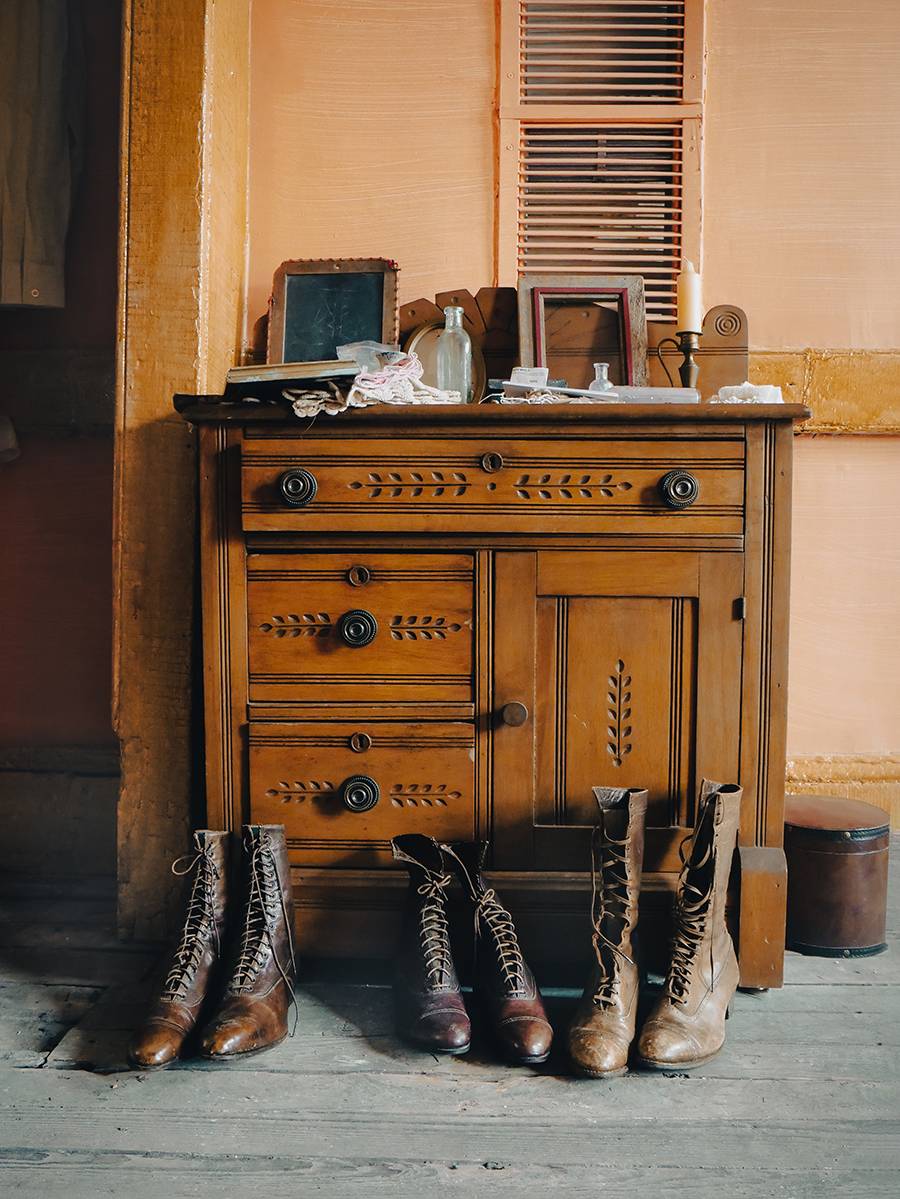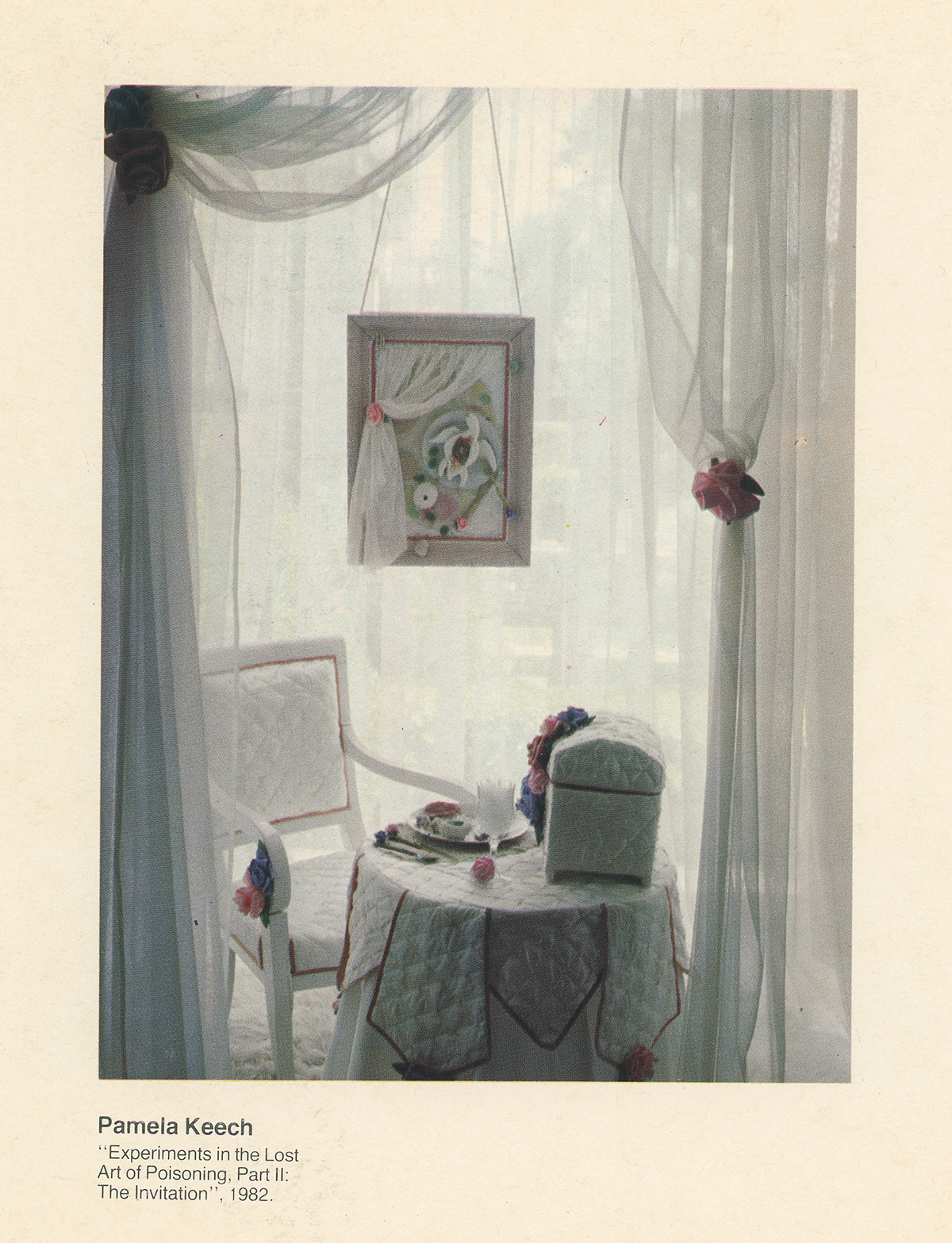Christopher Howard is communications manager for the American Academy in Rome.
If you could choose anyone to go flea-market shopping with, it would have to be Pamela Keech, a 1982 Rome Prize Fellow in sculpture. Keech, a visual artist, curator, and writer, has mastered the art of sourcing period furniture, kitchenware, clothing, and more, turning her finds into a unique form of art and storytelling.
Her resourcefulness has turned into three books: The Best Flea, Antique, Vintage, and New-Style Markets in America (2013), The Curious Shopper’s Guide to New York City: Inside Manhattan’s Shopping Districts (2006), and The Civilized Shopper’s Guide to Rome (2004). Most significant in her award-winning career, Keech has produced over a dozen exhibitions and rooms for museums where, thanks to her magic, visitors can travel back in time.
Keech, who was born in Elyria, Ohio, and lives Nashville, Indiana, advises museums ranging from the East Hampton Historical Society, the Over-the-Rhine Museum in Cincinnati, and National Museums NI in Northern Ireland. The main beneficiary of Keech’s powers has been the Lower East Side Tenement Museum in New York, where she has worked for thirty-five years as a consulting curator, and for which she designed every apartment.
In recent months, Keech served on the design team for the Tenement Museum’s latest exhibition, A Union of Hope: 1869, completed late last year, and the museum’s first exhibition to feature the home of a Black family. A Union of Hope tells the story of Joseph Moore, a waiter and carriage driver, his wife, and her sister-in-law and family, who share an apartment with an Irish washerwoman and her teenage son, in the period immediately following the Civil War. AAR spoke to Keech about the new exhibition, her Rome Prize Fellowship, and her evolving research methods.
The interview has been lightly edited for length and clarity.
You tell other people’s stories for a living. Could you please tell our readers a bit more of your own story?
I have been doing installations of rooms that tell stories since I wrote a murder mystery novella called Lust at Fox Gorge for my MFA thesis. I built a life-sized five-room installation of the setting of the mystery in the art gallery. Then I got the Rome Prize in sculpture. That was 1981. And yes, I kept building installations of rooms, large and small, at the Academy.
I have officially been historic furnishings curator at the Tenement Museum since 1988. I walked in one day and volunteered. I immersed myself in studying the lives of families of the Lower East Side of Manhattan. I have designed and re-created apartments of Black people, Irish people, Italians, Jews, Germans, Catholics, Puerto Ricans, and a fully equipped sewing factory.
I design the exhibits by learning as much as I can about a family: where they came from, their occupations, how they lived, what they ate, their children, religions, and so on.

I had to do my own research—no internet then. Library books, period catalogs and magazines showing dishes, glassware, cookware, stoves, furniture, care of children and infants, bedding, clothing, toys, etc., from the Civil War to the Depression. Few sources addressed the lives of ordinary people and their families. Lots of flea markets, junk shops, yard sales. (Antique shops are way too fancy.)
Now, thirty-eight years later, I am still designing exhibits for the Tenement and other museums, collecting period furniture, kitchenware, clothing, and more, and installing it all to tell the stories.
What was your experience like creating “A Union of Hope,” the apartment of Joseph and Rachel Moore?
It was challenging as it was different from previous apartments. All the re-created apartments at 97 Orchard Street are based on actual records from the NYC census that were found by staff and volunteers over the years. I stepped in after they were discovered when we had family members to tell us their experiences living at 97 Orchard. Some had period photos of their apartments. Others had many memories to tell us. Here we basically had nothing for Moore. All our family info came from a series of genealogists.
How large (or small) is the team that works on rooms at the Tenement Museum?
The team is divided into those who do research—can be any number of staff. Also volunteers. It all begins with random searches of the NYC census for families living at 97 Orchard and later for families at 103 Orchard. Some are experts in certain nationalities, occupations, or religions. They give me their findings and I start designing.
How did “A Union of Hope” differ from previous ones you’ve completed there?
The Moore family is the first not to have lived at either 97 or 103 Orchard. They lived on the lower west side, near Houston Street, in a two-room apartment. Five of them, three Black and two Irish. They were discovered in the census accidentally by one of the museum’s researchers. We already have an Irish Joseph Moore; “Joseph Moore, Colored” was next in the records. That’s how it all started.

Have your research methods changed over the decades?
Yes. First I wandered antique shows, flea markets, Goodwill, etc. Mostly in New York, also Connecticut. Now we locate everything we need on eBay and Etsy and order it. This goes through the curatorial department.
What is the scope of your work for three museums (Over-the-Rhine, East Hampton, Northern Ireland) that you’re currently advising?
Over-the-Rhine is in planning stages as the building in northern Cincinnati is repaired and restored. I have assembled a detailed furnishings plan for seven apartments there that were occupied between the 1860s and the present.
East Hampton is in the process of restoring a historic house on their grounds. As I understand it, they have many objects in storage from that and other buildings that I will be going through, selecting period items, and recreating room settings in detail. I might be there in residence this summer. I used to work with their director at the Tenement.
What have been primary takeaways from your Rome Prize year that have stayed with you?
I love being connected with all my Academy friends.